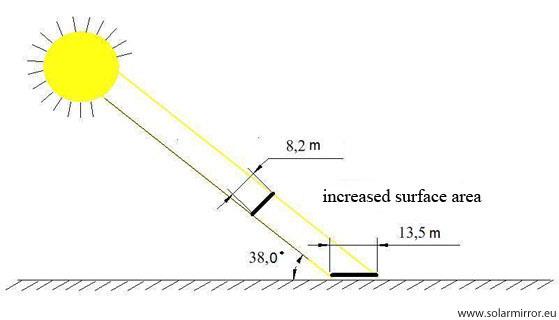Adresse:
DE-79117 Freiburg,
Schwarzwaldstr. 70
SOLAR CONCENTRATORS
Shaping the solar age, cheap and efficient
SolarMirror
SOLAR ENERGY

SOLAR ENERGY - FREE ENERGY
The incoming radiation energy from the sun to the earth is around 10.000 times greater than the world’s primary energy consumption.
This offer is a godsend, solar energy can meet 100% of our energy needs for just a fraction of the Earth’s surface that should be covered with solar panels.
However, our current usage of this enormous energy source is poor.
Solar energy is environmentally friendly, climate-friendly, free and yet sufficient for 4.5 billion years to come.
How could a solar system be built so that it brings its benefits even in winter? Is this even possible?
Our inexhaustible power plant, the sun, has a surface temperature of 5500 °C. This enormous energy can and must be harnessed. This requires the use of appropriate technology.
Which technique would be suitable for this?
A family of tree requires aproximately 120 liters of hot water per day. With solar energy, this amount of water is heated to a temperature of 50°C even when is 0°C outside.
Solar energy, among all renewable sources of energy, has by far the most greatest potential.
Sun energy
Sun energy, or solar energy is the energy that the sun produces by nuclear fusion. On the limit of the atmosphere, the intensity of solar radiation is about 1,367 kW/m².
Radiation that comes at right angle to the ground (when the sky is clear) is 0,8 – 1 kW/m2 (Pic. 1. Intrusion of sun rays under a).
The distribution of solar energy
Earth is not facing the sun as a plate, but as a sphere. Therefore the sunrays do not fall at right angles to the ground, but most often diagonally. On the surface on which the sun’s rays fall diagonally, the intensity of the sun’s energy is reduced.
Because of this slope of the utilization the solar energy is much lower, especially early in the morning and late in the afternoon. In both cases, the angle of the sun’s rays is far below the 40°. In the winter, this is manifested more. (Pic. 1, Intrusion of sun rays under b.)
Fixed solar systems are particularly affected by these issues.

Pic. 1: Depending on the angle of intrusion, the same amount of energy that the sun is transfering to Earth’s surface falls on a different area sizes.
More energy by propper angle of intrusion of the sun rays
The angle of slope of fixed solar systems is usually adapted to a summer time. Even in this case, this systems are just a couple of hours per day optimally faced towards the sun.
Pic. 2: Comparasion. The amount of energy produced by guided systems as well as by fixed systems.


However, If the solar device tracks the position of the sun from sunrise to sunset we can get more energy. Approximately the same result of both energy system is given only at noon.
The advantage of guided solar systems is clearly seen on the diagram. The energy efficiency on this system is higher than 40%.
Changes of the optimal angle of ray intrusion (which is 90°) inevitably lead to a waste of sunlight. Therefore, the amount of energy is distributed over a larger area (for example in the morning or in the afternoon).

We offer a comprehensive range of products and system solutions
Experience and tradition
We successfully combine your needs and our knowledge. Behind each of our projects is many years of experience.
